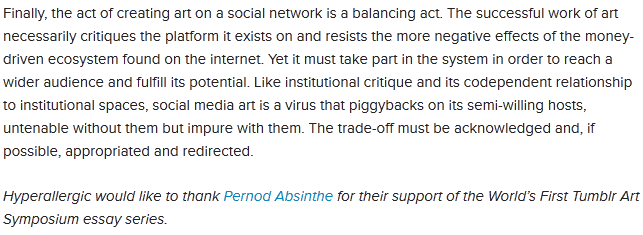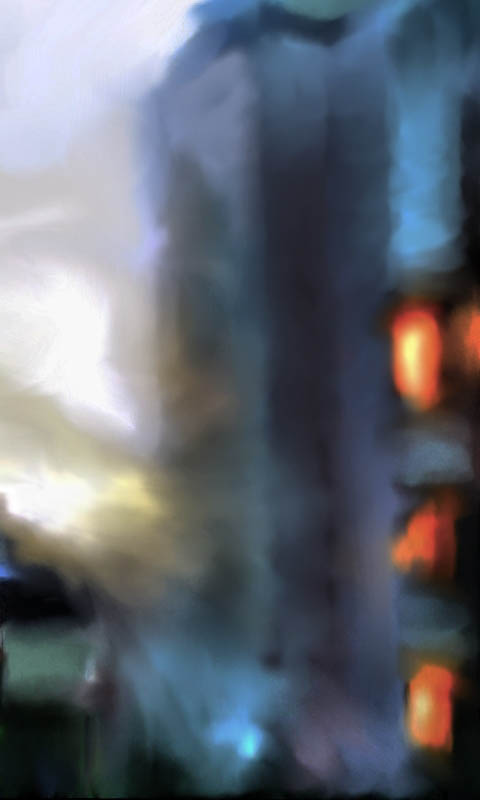A couple of excerpts from Hyperallergic's retardataire Tumblr symposium (in progress right now at 319 Scholes). First a screenshot from a Kyle Chayka essay about selling out:
And the final paragraph from Julia Kaganskiy's essay The Measure of Success: Making Art in the “Like” Economy:
Stats are woven into the fabric of the web and, tied as they are to the business prospects of many of our favorite service providers, the metrics aren’t going away anytime soon. If anything, we’ll probably see more attempts at the “gamification” techniques meant to encourage this behavior, like the addictive buttons and animated feedback that liking and reblogging currently feature. Short of choosing to disengage from the metrics system completely, as Benjamin Grosser did with his “Facebook Demetricator” project, which erased all visible numbers from his Facebook profile, there’s not much artists can do to extricate themselves from this data-driven system as long as they hope to make and display work online. The most successful creators will be those who choose to work within the system, but do so with self-awareness and purpose, and perhaps a good dose of humor as well.
I commented on the Kaganskiy essay:
"The most successful creators will be those who choose to work within the system," with or without the qualifiers that follow, reads like a Party dictate in the former USSR.
These writers live in a narrow tunnel defined by a handful of web providers. The point of these essays is "let's make our tunnel as comfortable as possible because we ain't never getting out."


